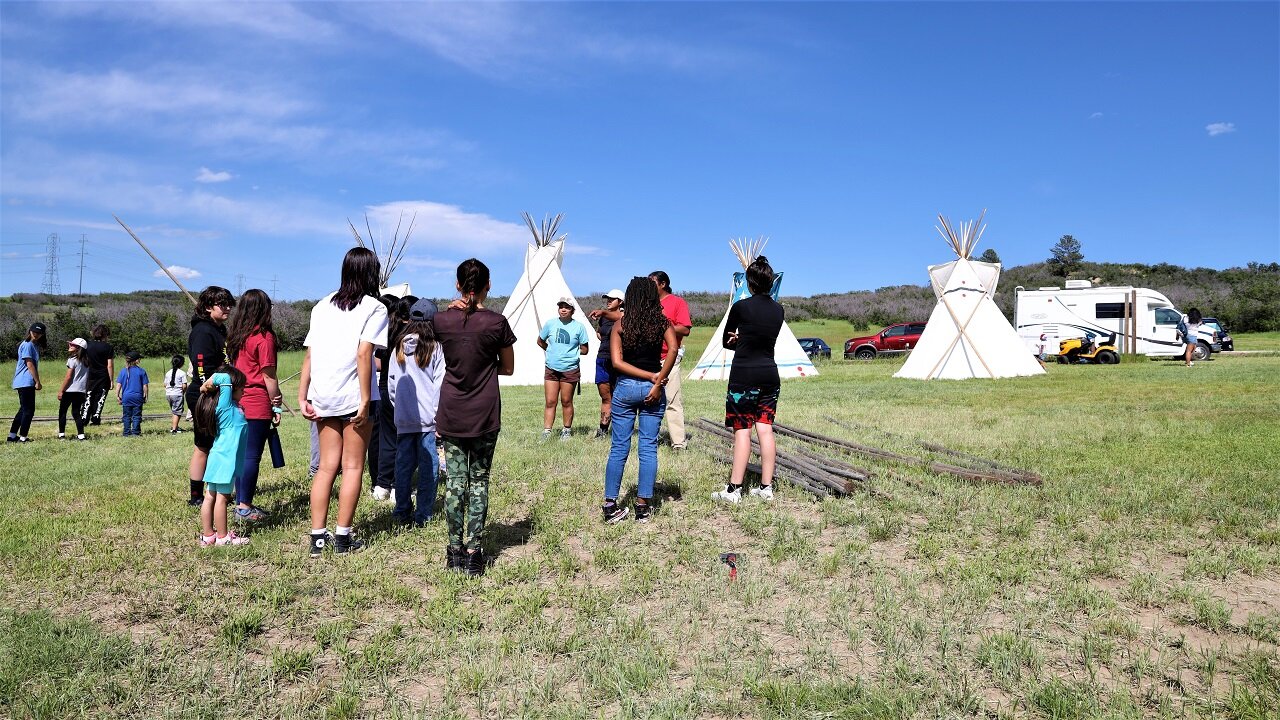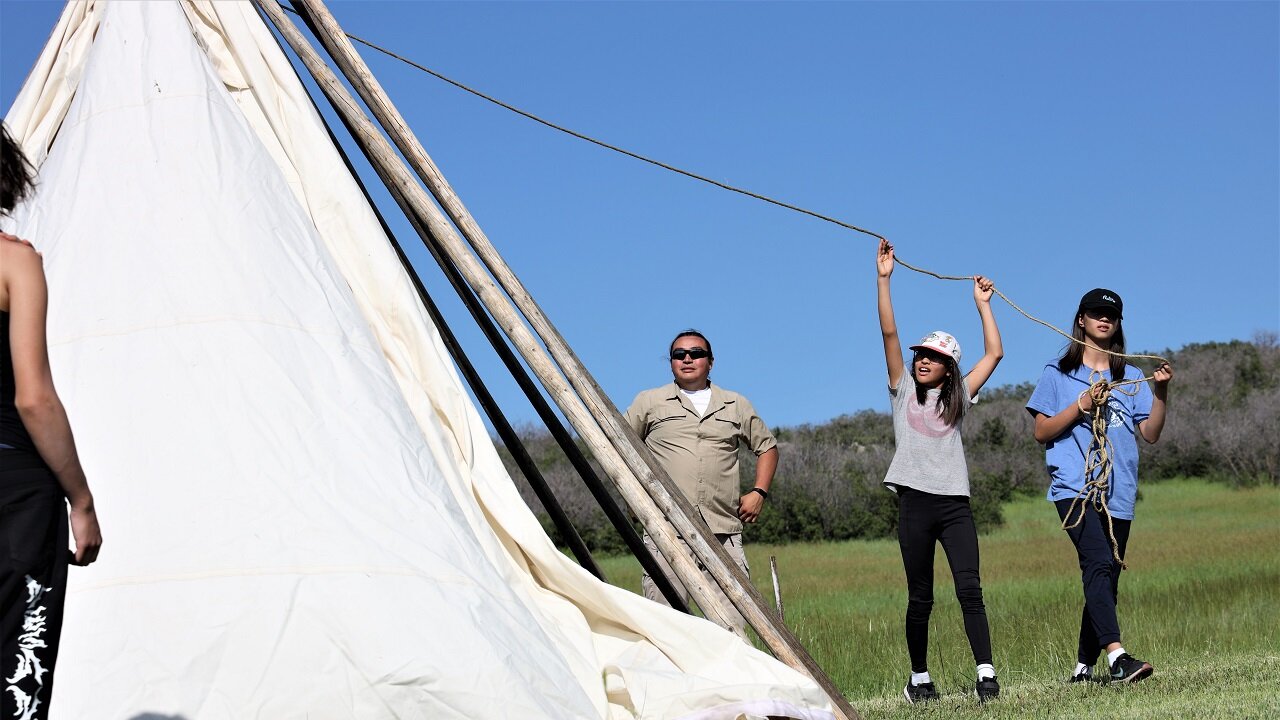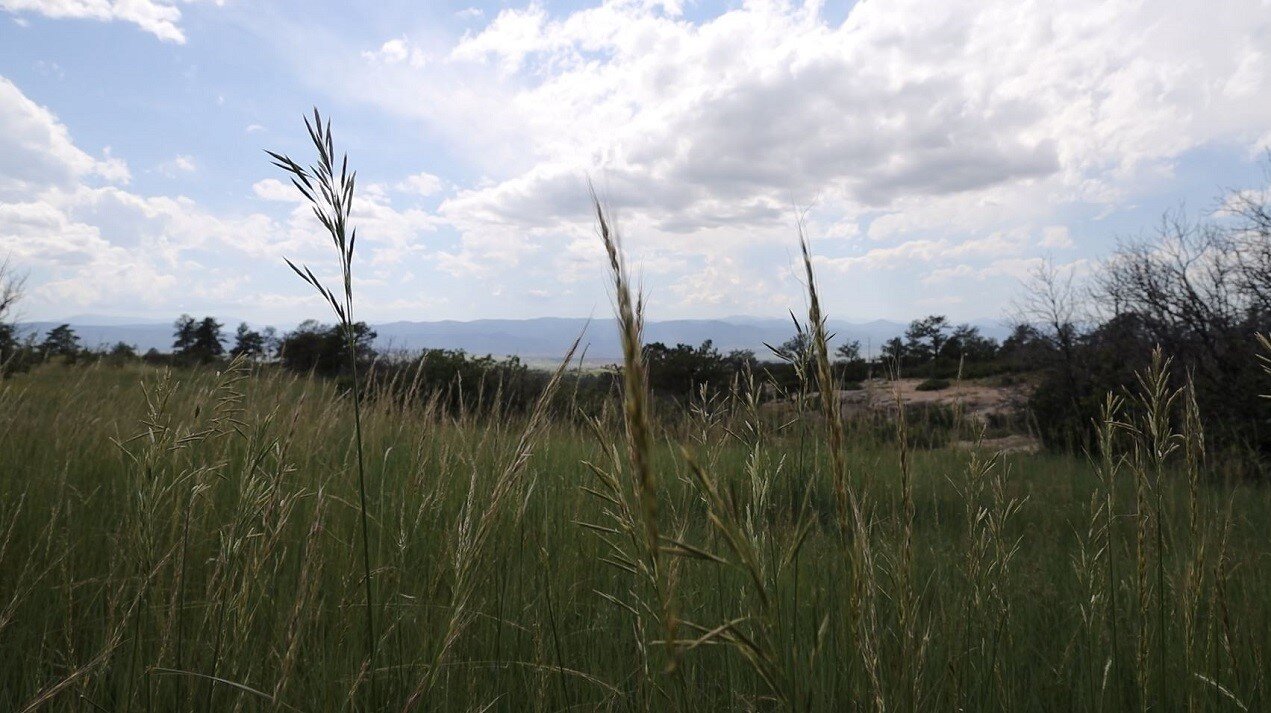Native youth connect to the land, each other and their histories at summer camp

SEDALIA, Colo. — Phillip Gover, who is from the Pawnee and Choctaw Indian tribes, looked across a hillside along the front range in what is now Douglas County, Colorado with a smile on his face. It was the start of the three-day Outdoor Native Youth Wilderness Camp at Tall Bull Memorial Park.
“We're constantly talking about relationship,” said Gover of the elders and counselors there for this camp. “It's relationship — not just to the tipi — it's to the weather, it's to other people. It's to yourself how you view yourself, how you see yourself in the past, how you want to see yourself in the future. It's acknowledging all these different relationships.”
The Denver Indian Center applied and received money for the camp for this year and the next through the Outdoor Equity Grant. Part of the Denver Indian Center’s mission is to provide holistic youth programming and education.
“I think it's really important because it gives an opportunity for the native youth, often in the urban areas, to utilize their own culture,” said Gover.
“During the summer, a lot of our native youth in the urban areas don't have the opportunities to go back to homelands, reservations, places like that,” explained Rick Waters, the executive director of the Denver Indian Center. “And there's not many opportunities around the Denver-Boulder area in terms of providing them an opportunity of going and getting some cultural awareness type education and interaction with other kids and youth.”
Looking into our nation’s history helps give context about why this type of camp is important. Congress passed the Indian Appropriation Act in 1951 creating the reservation system that forced tribes and nations into limited areas. Throughout the 19th and early 20th centuries, Indian boarding schools were established to “kill the Indian, save the man” as cited by The National Native American Boarding School Healing Coalition. These schools forcibly removed Indigenous children from their families to “reprogram” them.
[Related: Watch | Colorado Voices: An Indian Boarding School]
In 1953, Congress established a new policy toward American Indians of “termination”, eliminating most government support for Indian tribes. In response, the Bureau of Indian Affairs began a voluntary urban relocation program, which meant American Indians could move from their rural tribes to big cities including Denver.
As a result, some of today’s Indigenous generation are living in cities and are not as connected to their history and land.
“If grandma, grandpa, aunt, uncle, cousins are not there nearby, where are they going to be immersed in learning about their history, their background, their language, and things that are tied to it?” asked Waters, who is of the Kiowa and Cherokee tribes.

Campers introduced themselves to each other with their names and which Indian tribes they come from.
The camp started with a conversation encouraging the campers to think about their relationships with each other, with their elders, and with the world around them. The first activity the more than 20 teens did was set up two tipis for sleeping. Then Gover asked the campers to introduce themselves by name and their tribe.
As the groups constructed the tipis, the elders who helped also explained some of the history associated with the tipis including which tribes used them, how and when. The conversations also included math and science lessons from their ancestors and how it’s not so different from what they learn in school now.
“I want them to realize that everything that you learn from the culture and from this modern science thing, it's still talking about the same world,” said Gover.
By the end of the activity, the teens who started out quiet and reserved became boisterous and couldn’t stop laughing or talking with each other. Most of the campers said that there aren’t many native students in their schools. Gover believes that this camp is the perfect way for them to connect.
“They probably only are looking for those cultural identifying marks. I think being here they might realize, ‘Hey, we all look a little different …’ But also, that sometimes you just need to ask each other. And that's one thing we're trying to get them to do is to reconnect,” he said.

More than 20 kids participated in this year's camp which started by working together to set up tipis.
After the tipis were set up, it was time for food, most of which, Gover said was traditional Indigenous food. The next couple of days were filled with activities including leather crafting, creating a medicine bag, drawing on canvas or hide, finding traditional medicine ingredients and swimming in a lake. Each one with deeper lessons connected to the tradition and history of the many different tribes the students belong to and lived in Colorado.
“[This is] an opportunity for the young people to come here experience what it might have been like for some of their tribal ancestors to be on a hillside, looking over the front range mountains and having an experience of staying in a tipi or a tent overnight,” said Waters. “Before it was Colorado, this was Indian country, and it still is.”
The camp took place at Tall Bull Memorial Park which is in what is now Daniels Park. The grounds were first established in the 1970s as a “sacred place”, as Waters called it, for gatherings and ceremonies for Indigenous peoples. There are also sweat lodges and some burials on the grounds. The importance of this place cannot be understated.
“This is our land. This is our homeland. And everything from our spirituality to the medicines, to the ceremonies … to what made tribes and their tribal members who they are through the language, and everything is all tied to the land in some respect,” Waters explained. “And the more our young people have that understanding of that tie that's inherent within native people… we’ve got to keep that knowledge alive and ongoing.”
Even though the camp was only a few days, Waters, Gover and the other elders who taught lessons hope the knowledge and understanding gained will continue through the rest of these kids’ lives.
As Gover put it, "If they realize … knowing that culture allows and gives insight into ways of looking and thinking — you'll do better, and we'll all do better.”

Amanda Horvath is the managing producer at Rocky Mountain PBS. You can reach her at amandahorvath@rmpbs.org.
Julio Sandoval is the senior photojournalist at Rocky Mountain PBS. You can reach him at juliosandoval@rmpbs.org.